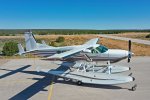Hi all,
I know this is a rookie question, but I just want to make sure - am I correct in my understanding that small airstrips located in class G/unrestricted airspace do not require notification of ATC prior to flight within 5 miles?
The area I live is has many small helipads and airstrips on AirMap, etc., several I believe are legacy designations that are no longer actually active, some are active hospital helipads, etc., we only have one large radius of restricted airspace for the large airport on the other side of the city.
Obviously, if I were to fly in unrestricted space, but close to a small airport or helipad location that could have air traffic, such as a hospital helipad, I would still choose to notify them, but to be honest I would probably just choose not to fly that close. That being said, there are some nice places to fly that are a few miles out from those helipads, if flying there I would be staying well aware and under any altitude that the choppers would be going through at that distance from the hospital (which I highly doubt would be less than 400ft anyways, but still good to be careful), or any higher altitudes near the air strips. TBH I’m pretty confident that the air strips don’t have towers, they’re all grass airstrips with a couple small Cessna type planes that go up infrequently.
Kind of tying in to this, is it proper to say that any area where LAANC approval is not needed/available, also does not require any ATC notification? Again, obviously there are still situations where it would be appropriate, but just trying to understand the FAA rules.
I know this is a rookie question, but I just want to make sure - am I correct in my understanding that small airstrips located in class G/unrestricted airspace do not require notification of ATC prior to flight within 5 miles?
The area I live is has many small helipads and airstrips on AirMap, etc., several I believe are legacy designations that are no longer actually active, some are active hospital helipads, etc., we only have one large radius of restricted airspace for the large airport on the other side of the city.
Obviously, if I were to fly in unrestricted space, but close to a small airport or helipad location that could have air traffic, such as a hospital helipad, I would still choose to notify them, but to be honest I would probably just choose not to fly that close. That being said, there are some nice places to fly that are a few miles out from those helipads, if flying there I would be staying well aware and under any altitude that the choppers would be going through at that distance from the hospital (which I highly doubt would be less than 400ft anyways, but still good to be careful), or any higher altitudes near the air strips. TBH I’m pretty confident that the air strips don’t have towers, they’re all grass airstrips with a couple small Cessna type planes that go up infrequently.
Kind of tying in to this, is it proper to say that any area where LAANC approval is not needed/available, also does not require any ATC notification? Again, obviously there are still situations where it would be appropriate, but just trying to understand the FAA rules.












